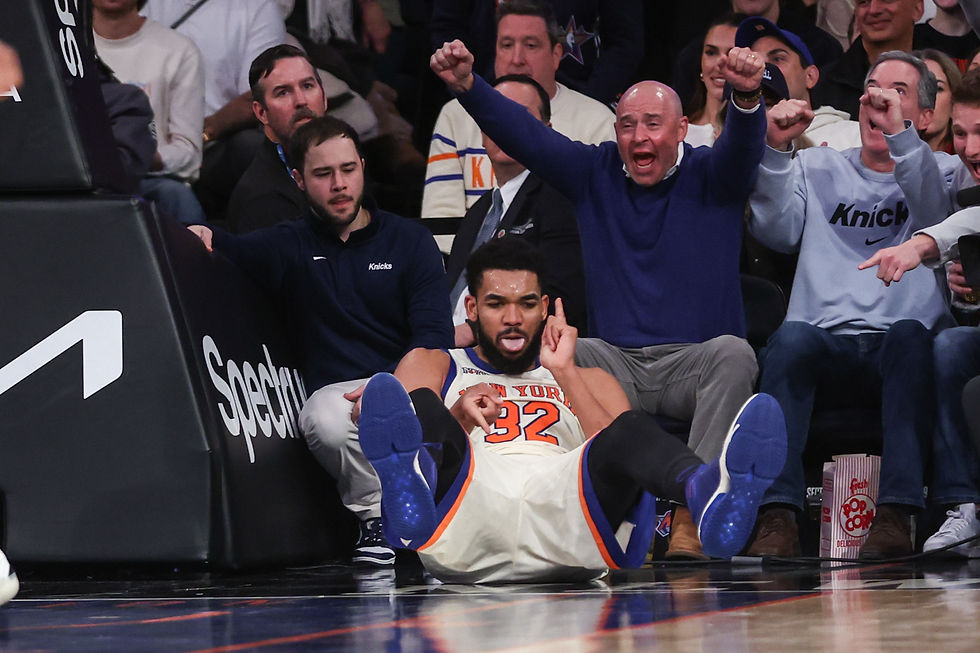- Noah Abrams
- Sep 2, 2025
- 4 min read
The Golden State Warriors and Jonathan Kuminga have been stuck in a tense contract standoff for some time, as the 22-year-old wants more financial and career stability from the organization. This impasse between the two has dominated the NBA soundwaves while stalling the Warriors’ ability to make any significant moves to boost their roster.
With negotiations at a standstill, Kuminga desires a fresh start in his young career. Still, the Warriors are unwilling to comply with his wishes with the restricted free agent leverage they have over him. Let’s look at some of the contract issue details in depth, Kuminga’s growing frustrations, and what is potentially next for both parties.
A Long-Running Feud
The hostility between Kuminga and the Warriors is nothing new, but it reached a boiling point during this past season. Kuminga’s role in the team diminished drastically following the trade that helped them acquire veteran star Jimmy Butler. The reduction in his playing time caused a domino effect that fueled his anger over what he views as years of fluctuating minutes and inconsistent opportunities under the authority of head coach Steve Kerr.
Despite his frustrations, Kuminga displayed flashes of greatness and potential during the postseason that would speak to his ability. When the “greatest shooter God ever created” (according to Stephen A. Smith), Stephen Curry, was sidelined along with Butler, he stepped up to the plate. It seemed that he could be a valuable piece in the resurgence of the Warriors when given minutes consistently. Even though his play was impressive, it didn’t do much to repair the damaged relationship.
The Contract Stalemate
Because Kuminga is a restricted free agent this year, he has limited leverage over what happens next with his career, even though he made it clear that he would prefer a fresh start playing for a different team. The Warriors reportedly offered him a two-year, $45 million deal with a team option on the second year, but not to Kuminga’s liking, as he refused to budge on signing it. He and his agents are lobbying for more long-term stability, closer to the $30-35 million annual average salary he believes his talent demands. At the same time, the Warriors have shown reluctance in facilitating a sign-and-trade with teams interested in pursuing Kuminga, such as the Sacramento Kings and Phoenix Suns, and have undervalued their offers, despite the Kings apparently looking to go all in to acquire Kuminga:
Their unwillingness, led by CEO Joe Lacob’s public admiration for Kuminga, has left both parties in limbo and has stopped the Warriors from making any roster moves. Logan Struck of Sports Illustrated discussed Lacob’s feelings toward Kuminga’s situation, stating, “I would take a lot for me not to match, for us not to match.” Lacob continued, “But again, we have to look at what makes our team best, and that’s really up to Mike (Dunleavy) to make those decisions and to recommend to ownership what to do. It’s going to play out pretty soon; you won’t have to wait too much longer.” An option for Kuminga is to accept his $7.9 million qualifying offer, which would make him an unrestricted free agent in 2026–this is a worst-case scenario for Golden State, which would risk losing him for nothing if he were to do so.
Is the Public Disagreement Exposing Deeper Rifts?
With some of this situation playing out in public, one may wonder if there are deeper issues in the organization tied to this particular scenario. Head coach Steve Kerr has publicly stated that he wasn’t sure of how to fit Kuminga into their current system and rotation. According to Farbod Esnaashari of CBS Sports, he specifically mentioned that averaging 38 minutes or more per night is difficult for Kuminga, given the high-usage veterans already established on the team and within the organization.
Conversely, Draymond Green challenged Kerr’s comments and assessment of Kuminga, hinting at the fact that the coach hadn’t fully invested in him by giving him a real opportunity to prove his worth in that kind of role. On the Draymond Green Show, he stated, that when providing advice to Kuminga, he advised him to stay quiet to protect his trade value, but also acknowledged that he would shine regardless of which team he plays for. This back-and-forth could have potentially revealed the dilemma between Kerr’s championship-focused, veteran-heavy approach and the need to develop the up-and-coming talent that is supposed to carry the torch for the franchise in the future.
Implications for the Future of Kuminga and the Warriors
As the offseason continues into late August, the clock is ticking. With the Warriors failing to resolve the Kuminga drama, it is a symptom of a larger issue. The “two timelines” method of developing young players while contending has failed tremendously due to injuries, roster changes, and internal strife. The longer the stalemate drags on, the more it threatens to sabotage their efforts to construct a competitive team for the upcoming season. For Jonathan Kuminga, his future remains uncertain. But for Golden State, the outcome of this negotiation will define their path forward, potentially forcing them to choose between their fading dynasty and the next generation of talent. What will they decide?

_edited.png)











